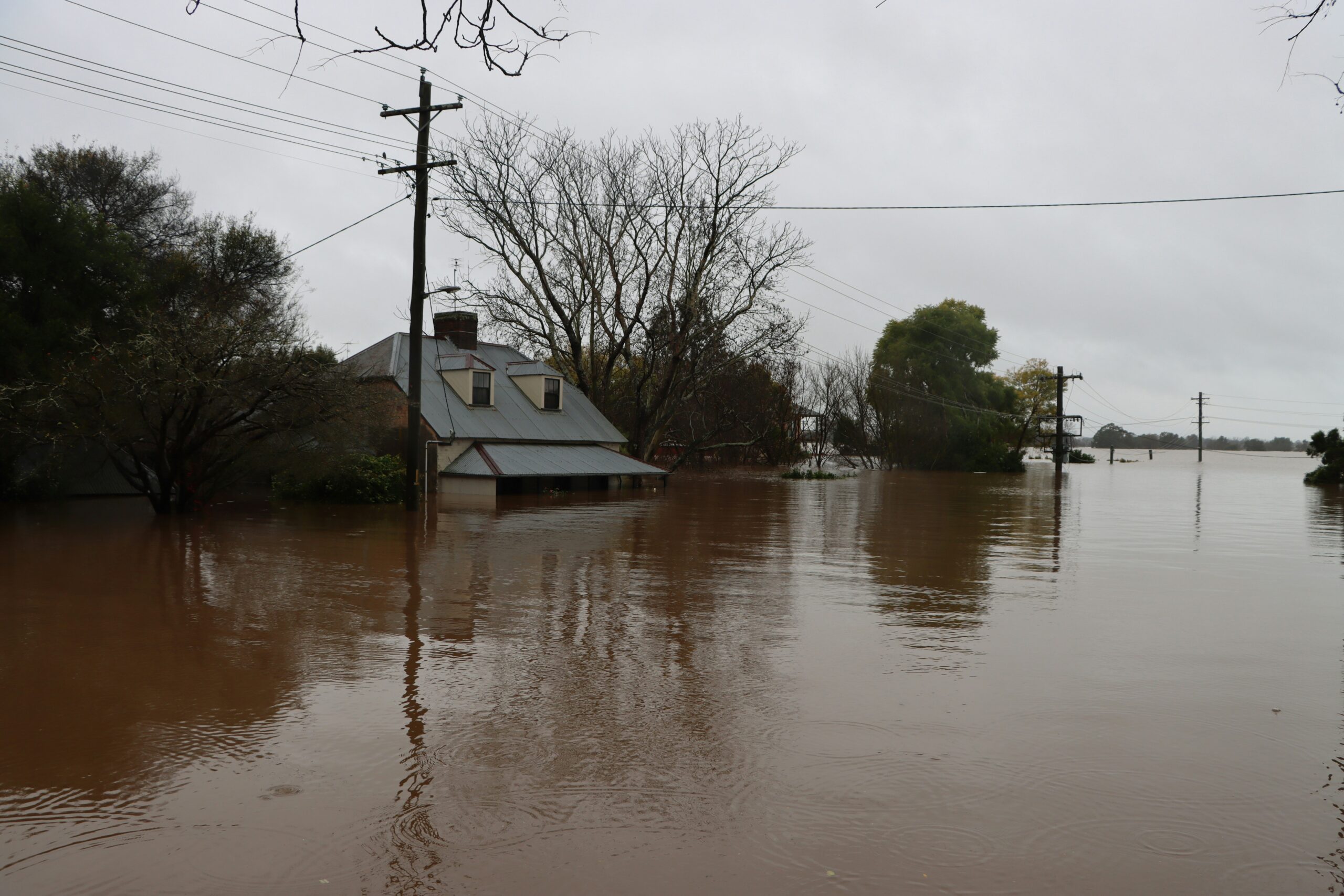Tragedy Strikes: The Impact of Heavy Rain and Flooding in New York City

Photo by Wes Warren on Unsplash
Introduction to the Flooding Incident
In recent weeks, New York City has been affected by an unprecedented weather phenomenon characterized by heavy rainfall and subsequent flooding. The deluge, which occurred in a short span, set off a chain reaction that not only disrupted daily life but also severely tested the city’s infrastructure. Reports of the intensity of the rainfall indicated that some areas received more than several inches of precipitation in just a few hours. This sudden onslaught of water led to extensive flooding, inundating streets, subway stations, and numerous properties across the five boroughs.
The flooding incident has drawn attention to the vulnerabilities inherent in urban environments, particularly in a bustling metropolis like New York City. Key transportation routes were rendered impassable, and many residents found themselves stranded as transit systems announced delays and suspensions. Moreover, emergency services were inundated with calls for assistance, highlighting the challenges posed by such extreme weather conditions. As water levels rose, many homes experienced significant water damage, leading to distress and displacement for numerous families.
Furthermore, the impact of this flooding extends beyond mere inconvenience. The psychological toll on residents grappling with property loss, along with concerns about safety, has been profound. New Yorkers are now questioning the city’s preparedness for future climate-related incidents, as the severity of the rain and flooding is a stark reminder of the increasing unpredictability of weather patterns globally. As communities come together to navigate the aftermath, discussions on infrastructure improvements and emergency response strategies are emerging as critical themes in the wake of the NYC flooding today.
Casualties and Emergency Response
The recent heavy rainfall experienced in New York City has led to devastating flooding, resulting in two confirmed fatalities. The incidents, which reflect the overwhelming impact of adverse weather conditions on urban environments, have shocked the local community. In both cases, the victims were caught in situations where the rising waters created life-threatening circumstances. The first reported casualty involved an individual who was swept away while attempting to navigate a flooded street. Emergency responders were alerted immediately, but despite their rapid deployment, conditions made rescue efforts challenging.
The second fatality occurred in a residential area severely affected by flooding. Reports indicate that the individual was trapped in their vehicle as water surged around them, rendering them unable to escape. Rescue crews, including the specialized scuba team from the New York City Fire Department (FDNY), were deployed promptly to conduct recovery operations. The FDNY scuba team is specially trained to handle emergencies involving water, ensuring the safety of both victims and responders during dangerous flood conditions. These teams organized search efforts in particularly affected neighborhoods, utilizing their expertise to navigate hazardous debris and swiftly identify those in distress.
The emergency response highlights not only the immediate actions taken to recover victims but also the importance of public awareness during such extreme weather events. As the city continues to grapple with the repercussions of flooding, discussions surrounding future preparedness measures and infrastructure improvements are becoming increasingly relevant. Understanding the factors contributing to the “nyc flooding today” is crucial in developing sustainable solutions and minimizing risks associated with similar events in the future. The community’s resilience and the dedicated efforts of emergency services serve as a vital reminder of the impact such tragedies can have on urban lives.
Extent of the Flooding in New York City
The recent heavy rainfall in New York City has led to significant flooding across various neighborhoods, impacting daily life and exacerbating existing vulnerabilities. Areas particularly affected include parts of Queens, Brooklyn, and the Bronx, where streets have been submerged under several feet of water. Images circulating through social media show cars trapped in deluged roadways, with some streets resembling rivers rather than thoroughfares.
Public transport services have faced unprecedented disruptions due to the weather conditions. Subway stations in low-lying areas, such as parts of Astoria and Coney Island, have experienced surface water intrusion, leading to station closures and service delays. Commuters rely heavily on these transit systems, and interruptions only add to the chaos during such adverse weather events. Buses have been rerouted or delayed due to flooded streets, leaving many residents stranded and causing a domino effect on the city’s overall mobility.
In addition to transport challenges, residents have reported multiple incidents of property damage, with basements and first floors inundated with water. The impact is particularly severe for vulnerable populations, including those living in economically disadvantaged areas where infrastructure is often inadequate to cope with extreme weather. Local authorities have issued warnings and advisories, urging residents to refrain from unnecessary travel and utilize emergency services as needed.
Throughout NYC, the fallout from this flooding event highlights the urgent need for improved infrastructure and robust urban planning to adequately address the challenges associated with climate change. As the city grapples with the immediate impact of this flooding, efforts to develop long-term resilience strategies will be crucial to mitigate the effects of future extreme weather occurrences.
Impact on Public Transportation
The recent heavy rain and resulting flooding in New York City have created significant challenges for the local public transportation system. As many residents rely on subways and buses for their daily commutes, the flooding has caused widespread disruption, affecting not only the transit authority’s operations but also the daily lives of countless commuters. With the streets submerged and water infiltrating subway stations, many lines were forced to suspend services, leaving passengers stranded and with limited alternatives for travel.
Subsequent to the flooding, the Metropolitan Transportation Authority (MTA) reported that several subway stations had to be closed due to water damage and safety concerns. This not only impacted accessibility but also resulted in longer wait times and overcrowded trains on remaining operational lines. For those who rely on the subway to reach their workplaces, schools, and essential services, the unpredictability and delays caused by the flooding have been particularly frustrating and disruptive.
Moreover, the bus services have also faced operational challenges. The flooding led to the rerouting of numerous bus lines, with many routes entirely suspended in areas heavily affected by water. Commuters accustomed to specific schedules found themselves navigating alternative routes that were not only longer but often more time-consuming. This unexpected disruption in bus service contributed to a sense of chaos in the city, as residents waited for updates on transportation options while trying to manage their daily responsibilities amidst the adverse weather conditions.
In summary, the flooding in NYC has left an indelible mark on the public transportation landscape, showcasing the vulnerabilities of urban infrastructure to extreme weather events. The operational challenges faced by the MTA not only affected transit services but also reflected broader implications for the city’s resilience in the face of increasing climate-related incidents. Understanding these impacts is essential for future urban planning and emergency management strategies, particularly in light of increased flooding occurrences.
Mayor’s Response and Public Safety Measures
In light of the severe weather conditions contributing to the ongoing NYC flooding today, city officials have swiftly mobilized to address the immediate needs of the residents. The Mayor has publicly acknowledged the significant challenges faced by New Yorkers and has outlined a comprehensive response strategy aimed at both immediate relief and long-term mitigation. This response includes the activation of emergency services to assist those affected by flooding throughout all boroughs.
Emergency services teams are deploying to assist with evacuations and to ensure that individuals have access to safe shelters. The Mayor has emphasized the importance of communication, urging residents to stay informed through official channels regarding current conditions and safety advice. Updates about emergency services support, including locations for shelters and resources for those displaced, are being disseminated through multiple platforms to reach as many individuals as possible.
Furthermore, the city is implementing preventative measures to reduce future risks associated with extreme weather events. This includes a review of the current drainage and stormwater management systems to identify areas in need of improvement. The administration is also evaluating potential upgrades to infrastructure that would enhance the resilience of the city against comparable events of NYC flooding today.
Public safety remains a priority; thus, authorities encourage residents to report instances of flooding or hazardous conditions via official hotlines and emergency apps. Educational campaigns are being launched to provide guidance on preparations that households can undertake before impending weather threats. These proactive steps aim to empower residents and enhance community resilience, ensuring that New York City is better prepared for future storm events.
Climate Change and Urban Flooding
The relationship between climate change and urban flooding has become increasingly evident, particularly in metropolitan areas like New York City. Over the past few decades, the frequency and intensity of extreme weather events have escalated, resulting in a more pronounced risk of flooding. Climate change contributes to the rise in sea levels and the increase in heavy rainfall, which together create a perfect storm for urban flooding incidents. NYC flooding today is not merely a consequence of heavy rains; it is a complex interplay of environmental shifts driven by global climate change.
As weather patterns continue to evolve, cities are experiencing an uptick in severe storms that can lead to significant flooding. In the case of New York City, periods of intense rainfall can overwhelm the existing drainage systems that are often outdated and not equipped to handle such extreme weather conditions. The urban landscape, characterized by impermeable surfaces, exacerbates the situation by preventing water absorption into the ground. This is critical to understanding the current challenges regarding urban infrastructure in the context of NYC flooding today.
Urban planning must adapt to these climatic changes to mitigate the risk of flooding. Strategies such as creating green spaces, enhancing drainage systems, and implementing better stormwater management practices are essential. By incorporating resilient infrastructure designs that account for climate projections, New York City can significantly reduce the adverse effects of urban flooding. Furthermore, continuous monitoring and assessment of climate-related risks is imperative for informed decision-making. Failure to recognize the implications of climate change on urban flooding will only serve to exacerbate the challenges cities face, ultimately impacting public safety and urban livelihoods.
Community Reactions and Support Initiatives
The recent incidents of NYC flooding today have prompted an outpouring of support and solidarity from residents and organizations across the city. Many locals have stepped up in meaningful ways, showcasing the resilience and compassion inherent in New York’s diverse communities. With public transport disruption and emergency responses taking center stage, grassroots efforts have emerged to ensure that those affected by the floods receive the necessary aid and resources.
Community centers and local organizations are at the forefront of these initiatives. They have established rapid response teams to provide food, clothing, and shelter to displaced individuals. Moreover, many have organized fundraising drives to gather financial contributions, which will help in the restoration and rebuilding efforts in the areas hardest hit by the floodwaters. Volunteer groups have mobilized, offering their time to assist with cleanup and recovery processes, as they recognize the urgency of the situation caused by flooding in NYC.
Social media platforms have also played a vital role in spreading awareness of these initiatives. Local residents share information on available resources, volunteer opportunities, and donation drives, ensuring that the message reaches a wider audience. Additionally, pop-up shelters have been established in various neighborhoods, providing immediate refuge for those needing shelter from the storm. Many have reported that local businesses are contributing supplies and funds to these shelters, illustrating a strong sense of community spirit amid adversity.
These responses to flooding in NYC today not only illustrate humanity’s ability to come together in difficult circumstances but also emphasize the importance of preparedness for future weather events. The collective actions taken by individuals and groups indicate a commitment to not just immediate relief but long-term recovery and resilience planning in anticipation of future challenges.
Lessons Learned and Future Preparations
The recent events surrounding NYC flooding today have underscored the pressing need for a comprehensive analysis of the city’s vulnerabilities. One of the foremost lessons learned is the importance of investing in robust infrastructure to mitigate the effects of heavy rainfall. Stormwater management systems require significant upgrades to accommodate the increased intensity and volume of rainfall. Implementing green infrastructure, such as permeable pavement and rain gardens, can help reduce runoff and improve drainage, thus decreasing the likelihood of flooding in urban areas.
Policy changes also play a crucial role in enhancing New York City’s resilience to future flooding. Local governance can explore stricter zoning laws and land-use planning to prevent construction in high-risk flood zones. Integrating climate projections into urban planning will allow city officials to anticipate and prepare for potential flooding scenarios. This proactive approach not only promotes the safety of residents but also preserves the integrity of the city’s infrastructure in the face of climate uncertainties.
Community preparedness initiatives have emerged as a vital facet of reducing the impacts of future flooding events. Educating residents on flood risks and implementing emergency response strategies can empower communities to act swiftly during deluges. Programs that emphasize personal safety, such as flood response drills and communication plans, can significantly enhance community resilience. Collaborating with local organizations to promote awareness and preparedness can foster a collective response to flooding and improve overall public safety.
Finally, engaging with technology can vastly improve how the city monitors weather changes and flooding patterns. Utilizing data analytics tools allows for better forecasting and timely alerts, enabling citizens to stay informed about impending flooding threats. By combining infrastructure improvements, policy reforms, community preparedness, and technology, New York City can emerge more resilient against the inevitabilities posed by climate change and intense weather conditions.
Conclusion: Honoring the Lives Lost
The recent heavy rains and subsequent flooding in New York City have resulted in profound tragedy, with lives lost and communities irreparably impacted. As we reflect upon these events, it is crucial to honor the victims and acknowledge the heart-wrenching consequences that flooding can impose on families and neighborhoods. Such incidents serve as a stark reminder of the vulnerability of urban areas to the unpredictable forces of nature. The stark realities of NYC flooding today call for not only mourning but also mobilizing for change.
In the face of adversity, community resilience emerges as a vital theme. Neighborhoods have historically come together in times of emergency, illustrating the strength that lies in collective action. From local organizations rallying to provide support to city agencies mobilizing resources, the spirit of cooperation shines through even amidst overwhelming challenges. This underscores the necessity of preparedness and effective response strategies to mitigate the repercussions of future flooding events.
Furthermore, as climate change continues to present increasing challenges, it becomes imperative to advocate for sustainable urban planning and infrastructure improvements to safeguard against the next inevitable storm. Residents must remain informed and engaged in dialogues concerning climate adaptation strategies. Collaborative efforts between city officials, environmentalists, and community members are essential in addressing both immediate concerns and long-term solutions to combat the lingering effects of climate change. The echoes of NYC flooding today must inspire action, ensuring that the lives lost are not forgotten, and that steps are taken to protect future generations.
In conclusion, let us honor those we have tragically lost by committing ourselves to resilience, preparedness, and proactive measures to adapt to our changing climate. Each step we take towards a more sustainable and compassionate urban environment is a tribute to the lives affected by flooding in New York City.




